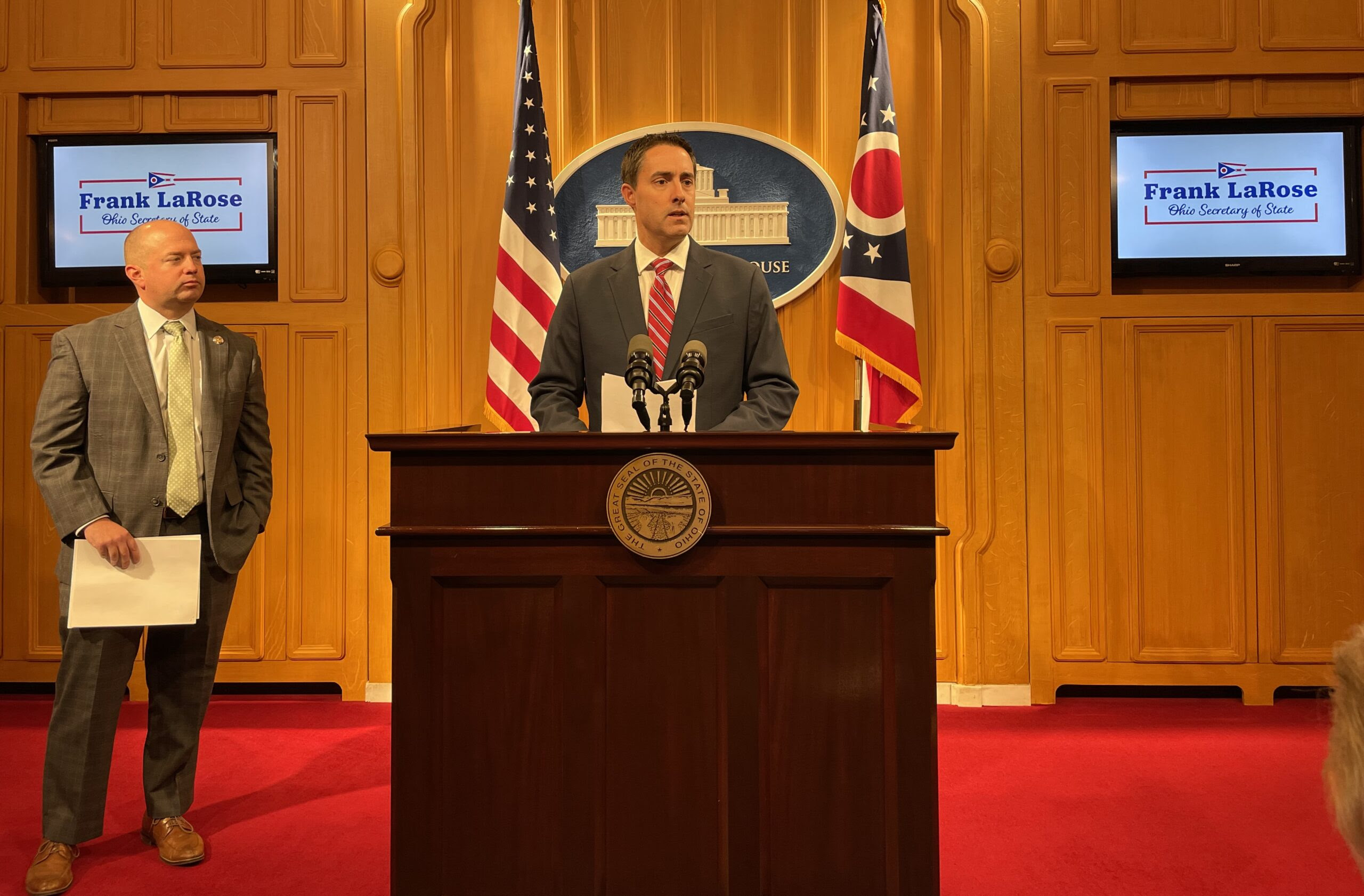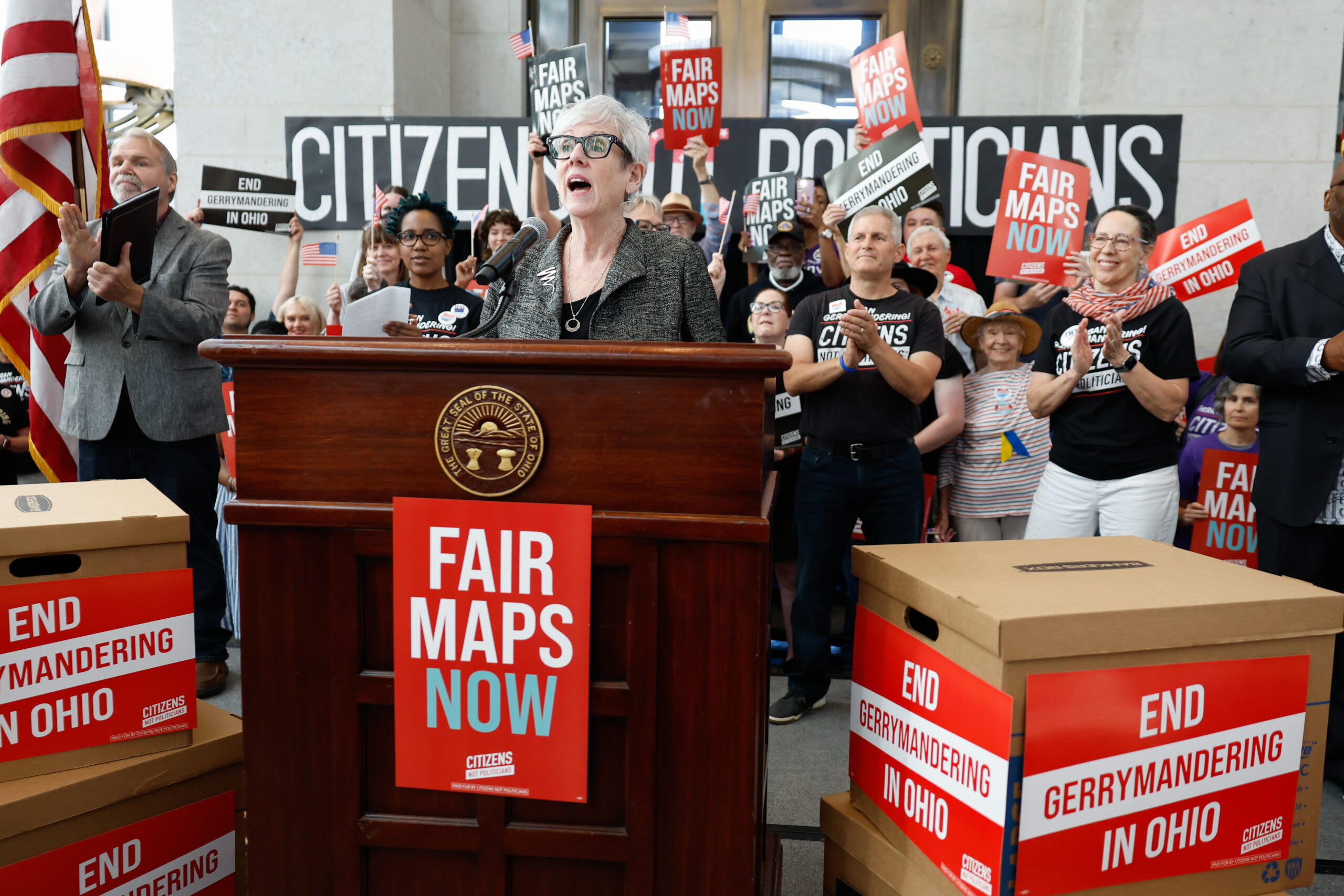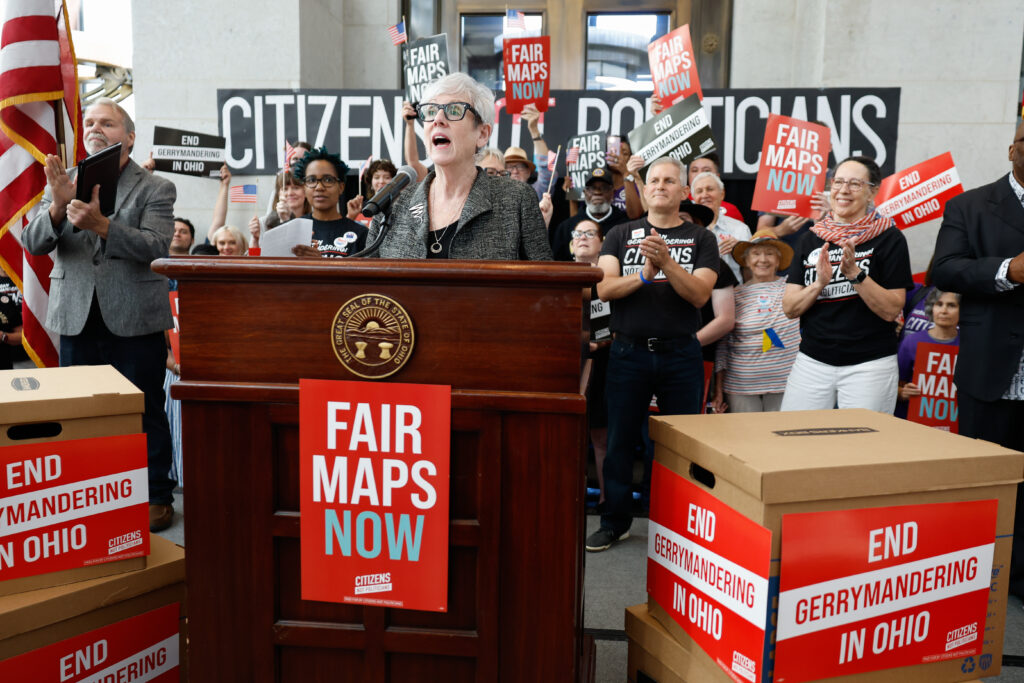Ohio citizens right now are represented by unconstitutionally gerrymandered state lawmakers. The politicians in the General Assembly in Columbus are occupying unconstitutionally gerrymandered seats. This is not a matter of opinion. It was adjudicated in the state’s highest court five times in 2021 and 2022.
After those decisions, an anti-abortion lobbyist sued to force Ohio to use the unconstitutional maps in 2022, but the federal court never declared the maps were constitutional. It never said the maps were not gerrymandered. It just said that Ohioans had to use them. So, in 2022, Ohio politicians refused to produce fair maps, and then a split federal court forced Ohio voters to use the gerrymandered ones.
Several of the Ohio politicians tooling around the state to campaign against redistricting reform this fall are the very same politicians who produced unconstitutionally gerrymandered maps over and over again in 2021 and 2022.
They insisted on them, and never allowed anything else, and ran out the clock to force Ohio voters to vote under them in November 2022, and to suffer them in 2023 and 2024 — to suffer them as we speak.
Gerrymandering is cheating: Politicians pick their own voters and draw their own districts in a way that guarantees themselves victory.
Often, the most extreme candidates win in primaries by appealing to the radical base. Gerrymandering guarantees those same extreme candidates victories in November so they can then waltz into office without ever experiencing a competitive general election.
This means that only a handful of races are anywhere close to competitive each November, and the vast majority of races are determined in partisan primaries each spring.
For instance, Ohio will decide 116 elections in the Ohio House and Ohio Senate this Nov. 5.
Six of them are actually competitive. Total.
Two in the Senate, four in the House. The rest are predictable.
Six competitive races out of 116.
That’s gerrymandering.
Meanwhile, a recent Baldwin Wallace University poll showed Ohioans have a net satisfaction with the state legislature of -34 points.
This summer, more than 535,000 Ohio citizens submitted petition signatures to put anti-gerrymandering reform on the ballot this November.
Issue 1 seeks to remove politicians from the map-making process in favor of a citizens commission.
Under Issue 1, the current Ohio Redistricting Commission made up of politicians would be replaced by a citizens commission made up of five Republicans, five Democrats, and five independent commissioners.
Ohioans previously passed constitutional amendments to ban gerrymandering in 2015 and 2018 but those reforms, which were put on the ballot in compromises with lawmakers, left politicians and lawmakers in control.
In 2018, the politicians campaigned against gerrymandering, but after they won election they refused to honor the amendments. In 2021 and 2022, they forced gerrymandering on Ohio anyway.
If you average Ohio’s statewide partisan elections over the last 10 cycles, including 2022, Ohio is a 56-43 Republican-to-Democratic state. But after 2022, the Ohio House has 67 Republicans and 32 Democrats. In the Ohio Senate, 26 seats are Republican while seven are Democratic. Of Ohio’s 15 U.S. Congressional seats, 10 are held by Republicans and five held by Democrats.
This means that even though Republicans represent 56% of voters in Ohio on average, they control 66% of the state’s U.S. Congressional seats, 67% of the Ohio House, and 79% of the Ohio Senate.
This is the gerrymandering that was forced by politicians on Ohio voters in 2022, despite a total of seven bipartisan Ohio Supreme Court rulings against the Statehouse and Congressional district maps as unconstitutionally gerrymandered.
This November, Ohio voters will decide. They will decide what gerrymandering is and what it isn’t. Ohio voters will decide if politicians should be left in charge of redistricting, or if the politicians should be kicked out of the process in favor of a citizens commission.
To make that decision, voters deserve facts and context, not lies and gaslighting.
In service to that, the Ohio Capital Journal Voter Guide explains the Ohio Issue 1 proposal here.
I have also assembled below for your edification and amusement, a timeline: A brief, awful history of the very recent past when it comes to Ohio gerrymandering.
How we got here
2011: Ohio Republicans create some of the most gerrymandered maps in the nation in a downtown Columbus secret hotel room “bunker,” ensuring them 10 years of supermajority control over the Ohio legislature that continues to this day. Also over the following 10 election cycles under the 2011 maps, not one U.S. Congressional district would change hands between parties.
2015: Ohio voters pass anti-gerrymandering reform for Statehouse districts with more than 71% of the vote, but the reforms leave politicians in charge of drawing the districts.
2018: Ohio voters pass anti-gerrymandering reform for U.S. Congressional districts with nearly 75% of the vote, but again, the reforms leave politicians in charge of drawing the districts.
2018: Republicans win the governor’s office, the secretary of state’s office, and the auditor’s office, giving them 5-2 control over the Ohio Redistricting Commission that also includes a lawmaker from each party from each chamber in the legislature.
2020: The U.S. Census Bureau conducts its 10-year census, spurring another round of redistricting in 2021.

2021-2022: A bipartisan majority on the Ohio Supreme Court rejects Republican-drawn Statehouse district maps as unconstitutionally gerrymandered five times.
As a member of the Ohio Redistricting Commission, Gov. Mike DeWine goes along with the Republican legislative leaders’ gerrymandering. Also as a member of the commission, Ohio Secretary of State Frank LaRose goes along with the gerrymandering as well, after campaigning in 2018 telling the nation he was against gerrymandering, and after, as a member of the redistricting commission, calling the maps “asinine” and texting his chief of staff, “I should vote no,” before ultimately voting yes, repeatedly.
Also 2021-2022: A bipartisan majority on the Ohio Supreme Court rejects Republican-drawn U.S. Congressional district maps as unconstitutionally gerrymandered two times.
2021: Ohio Republican lawmakers add party labels to Ohio Supreme Court races.
2022: Republicans on the Ohio Redistricting Commission refuse to follow the bipartisan Ohio Supreme Court’s order to draw districts that aren’t gerrymandered, thereby running out the clock after an anti-abortion lobbyist files a lawsuit in federal court to force Ohio voters to use the gerrymandered maps. Two Trump-appointed judges agree to force Ohio voters to vote under unconstitutionally gerrymandered maps.
Also 2022: Swing-vote Republican Chief Justice Maureen O’Connor is forced by law to retire due to age. As she ruled against Republican gerrymandering, there were discussions by Republicans about possibly impeaching O’Connor.
Also 2022: Ohioans are forced to vote under unconstitutionally gerrymandered maps to elect our current 135th General Assembly (“serving” 2023 and 2024). Republicans increase their gerrymandered supermajorities in both chambers. They also win ideological control over the Ohio Supreme Court, so while their majority remains 4-3, there is no longer any bipartisan swing vote on the issue of gerrymandering.
Also 2022: A coalition of advocates start planning further redistricting reform.

Shortly thereafter, Secretary of State LaRose and Republican state Rep. Brian Stewart announce a proposal to raise the threshold in Ohio for passing constitutional amendments from 50% to 60%.
LaRose denies that the proposal is connected to abortion or gerrymandering, but in a memo Stewart writes to his colleagues, he lists only two reasons for them to support his proposal: stopping the abortion rights amendment and stopping any further anti-gerrymandering reform in Ohio.
January 2023: Ohio’s unconstitutionally gerrymandered legislature takes their seats.
Also 2023: Ohio Republicans enact one of the most restrictive voter laws in the country. They also eliminate August elections. They make a play to put the 60% amendment threshold on the May ballot in Ohio, but fail. Later, they bring back a special August election to put the 60% proposal to voters. DeWine supports the proposal. Meanwhile, the Ohio reproductive rights proposal qualifies for the November ballot. DeWine is against it.
August 2023: 57% of Ohio voters reject the proposal.
Later that same month, a group called Citizens Not Politicians is formed to put forward a new anti-gerrymandering amendment proposal that would remove politicians from the process of drawing districts and replace them with a citizen-led commission.

Retired Republican Ohio Supreme Court Justice O’Connor and former Democratic Ohio Supreme Court Justice Yvette McGee Brown join together to spearhead the effort. They make plans to put the amendment ballot proposal before voters in November 2024.
Also August 2023: As chair of the Ohio Ballot Board, Secretary of State LaRose, who opposes the Ohio reproductive rights amendment, uses his official position to write ballot summary language for the amendment that uses loaded language against the amendment.
September 2023: The Ohio Redistricting Commission unanimously passes maps to be used in the 2024 Election, which Democrats say they agreed to because they say Republicans would have passed even more gerrymandered maps that would’ve likely been approved by the new Republican majority Ohio Supreme Court without O’Connor on it as a swing vote.
October 2023: The Citizens Not Politicians amendment petition is cleared as “fair and truthful” to begin collecting signatures.
November 2023: 57% of Ohio voters pass the state’s new reproductive rights amendment. Moreover, 57% pass a new law for adult-use recreational marijuana.
July 2024: Citizens Not Politicians submits petition signatures, and 535,000 signatures are certified, putting Issue 1 redistricting reform on the November 2024 ballot.
August 2024: As chair of the Ohio Ballot Board, Secretary of State LaRose, who opposes the Issue 1 anti-gerrymandering amendment, uses his official position to write ballot summary language for the amendment that uses loaded language against the amendment.
Oct. 8, 2024: Early voting begins in Ohio.
Read the original piece here.

